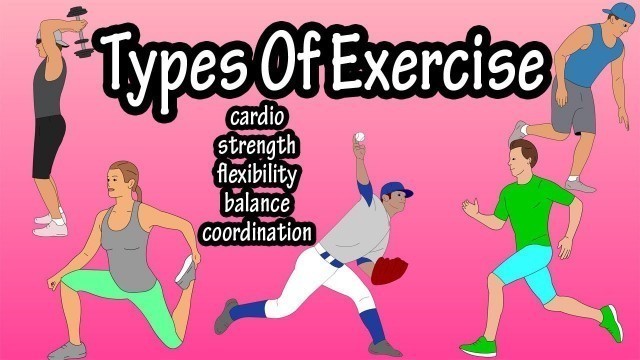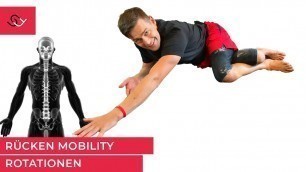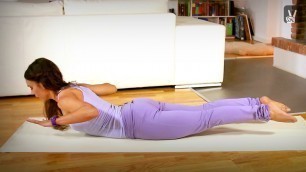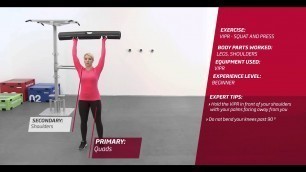

'In this video we discuss the different types of exercises, including cardio respiratory or aerobic exercise, strength training, flexibility, balance and coordination. We also discuss the benefits of each of these and some examples of each. Transcript/notes(partial) Cardio The first type of exercise is cardio respiratory or aerobic exercise, which in general is any type of exercise that raises your heartbeat. Your respiratory and cardiovascular systems work together to deliver oxygen you breathe in to all parts of your body and doing regular cardio exercise sessions strengthens both of these systems and many of the organs in these systems, such as your lungs and heart. There are different types of cardio exercise and they are usually based on heart rate and exertion. Steady state cardio is keeping a constant pace for a specific distance or duration, such as walking or jogging. Even performing everyday tasks such as cleaning the house, cutting the grass or working in the yard can be considered a moderate form of cardio. Interval training is another type of cardio, where you maybe walk for 3 minutes and jog for 30 seconds, repeating this cycle for a specific time period. Circuit training, combining some strength exercises with cardio based exercises. For instance, 4 exercises, side to side hops, side dumbbell raises, lunges, and push ups. You can take short rests between the exercises or do the complete circuit and take a rest and then do the circuit again. And more advanced athletes can do hiit or high intensity interval training. An example of this would be to maybe sprint for 20 seconds and then walk for 20 seconds and repeat this cycle for say 8 bouts. This would be a 1 to 1 ratio and the ratio can be changed as many athletes do a 2 to 1 ratio, sprinting for 30 seconds then walking for 15 seconds. Strength The next type of exercise is strength or resistance training, which in general is any type of exercise that requires a muscle, or group of muscles to exert force. Resistance training can help improve strength, stamina, increase bone density, improve sleep and it can also make many everyday tasks easier, such as climbing up stairs, carrying groceries into the house, and taking the dog for a walk. There are many different types of ways to perform strength training exercises. You can use free weights, such as dumbbells, which are very efficient as they allow for a full range of motion and work more stabilizing muscles. Resistance bands are very versatile, as all you need to use them is something to wrap them around, which in many cases can be your own body. Bands are great at providing what is called progressive resistance, which means they provide an increase in resistance throughout the range of motion of the exercise. Exercise machines provide another way to do resistance training. Body weight exercises are another way to perform resistance training. In these types of exercises, your body is providing the resistance against gravity. There are many other ways to perform strength training exercises such as with medicine balls, suspension trainers, and exercise balls. Flexibility Flexibility exercises are the stretching of muscles and tendons to improve joint range of motion, and physical function. There are many types of stretches to improve flexibility with the 2 most popular being static stretches and dynamic stretches. Static stretches consist of slow movements into a peak position, then holding that position. Dynamic stretches is moving parts of the body through a full range of motion, while slowly increasing the reach or speed of the movement. Balance The next type of exercise is balance training. Having good balance can help to prevent falls and injuries, improve neuromuscular connections, improve athletic performance, and make many everyday movements easier. There are 3 main types of balance, stationary balance, motion balance and offset balance. Stationary balance is when your body is not in motion, so, standing still on both feet requires balance. Motion balance is exactly what it sounds like, the ability to balance yourself during movement. A great example of this is lunges. Offset balance which is where one side of your body holds a weight, or each side of your body holds a different amount of weight. Coordination Coordinated movements, is the ability to use different parts of the body together smoothly and efficiently. A few exercises to improve coordination include tossing a ball against a wall and catching it as it returns to you, dribbling a basketball while jogging and alternating hands, kicking a ball against a wall and stopping it as it returns to you, doing jumping lunges alternating feet, and you can even combine strength training movements like doing a squat to an arm curl to a shoulder press, or a bent over row to a kickback to improve coordination.'
Tags: strength training , balance exercises , strength training for beginners , types of exercise , types of exercise in gym , types of exercise at home , types of exercise at gym , exercise types , exercise types in gym , how many types of exercise in gym , different types of exercise , main types of exercise , cardiovascular exercise , cardiovascular exercise for beginners , balance exercises for seniors , balance exercises for athletes , coordination exercises , coordination exercises for seniors
See also:



!['[Fitness Mantra] Saath Nibhana Saathiya 2: Devoleena aka Gopi Bahu’s rare inspiring workout video'](https://cdn-img01.fitness4blog.com/images/5-m/534/534903_m.jpg)












!['[Nul en Fitness ?] Comment bien faire vos FENTES (= lunges)'](https://cdn-img01.fitness4blog.com/images/5-m/515/515104_m.jpg)
comments